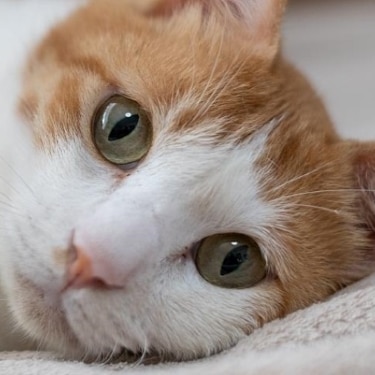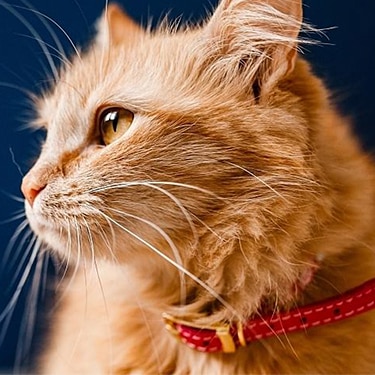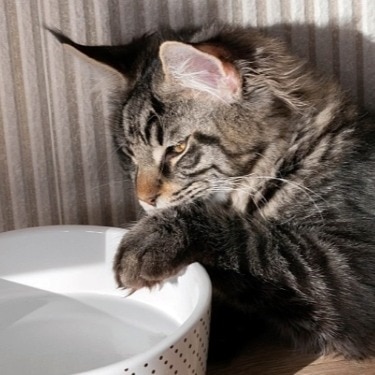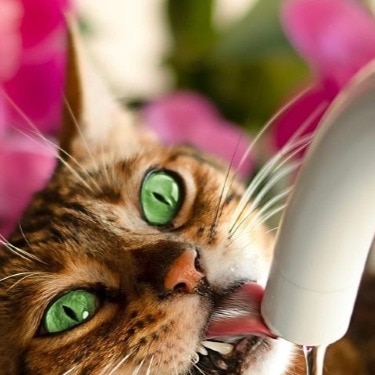The Persian is an extreme-looking breed. The body is short, but thick with thick legs and a short, thick neck. The tail is short and the ears are small. The head is round with large, round eyes. When viewed in profile her face is flat and the nose changes direction so that what is seen is mostly the colored flesh on her nose.
The coat on a Persian is thick, full and long. It is fine, but should be lustrous and glossy.
The Persian is a placid cat that exhibits bursts of kitten-like activity. She will be sleeping in the sun when she suddenly explodes, running around the room and rolling around.
The Persian will stretch out next to you, sleep in your bed, and sit on your lap when she is in the mood. She does not mind changes in routine and is generally friendly with anyone and everyone.
The Persian needs to have her nutrition controlled to stay in good condition. Since the breed is not known for a high degree of energetic exercise, attention must be paid to both her nutrition and regular exercise. That means the Persian must get exercise to keep in top condition. While Persians like to play with their parents and will play with interactive toys, chase balls, and attack catnip mice, you might have to keep after them to exercise daily.
The Persian coat requires attention daily. She must be brushed and combed in order to keep the coat from tangling. In addition, the flat face must be cleaned regularly and carefully as tear stains can be deposited on the face.
The Persian is an ancient breed of cat and, as with other ancient breeds, her history is a bit clouded. Longhaired cats were in Italy in the 1500s. These cats were imported from Asia. In the 17th century, Pietro della Valle brought a cat from Persia to Italy to add to the breeding program. This cat may well have been a cat known in Persia as the Sand Cat, a cat who lived in the desert. This Sand Cat had a woolly coat, much like a steel soap pad, to protect her from the environment and permit her to live in the sand.
About a hundred years later, Nicolas de Pereisc acquired some longhaired cats. These cats came from Turkey, which is also the home to the Turkish angora, a different breed of longhaired cat. In the 19th century, the descendants of these Turkish cats were bred with some of the cats from Italy, and that was the beginning of the modern Persian. Although this breed is ancient, it is also man made.
The popularity of the Persian was enhanced when Queen Victoria and other royals fell in love with this stunning breed. They were introduced into the United States at the end of the 19th century, where they were soon popular.
Adopt a pet. Change a life.
Are you prepared to adopt a pet? Use these tools to make sure you are ready for the commitment.
Adopt a pet. Change a life.
Are you prepared to adopt a pet? Use these tools to make sure you are ready for the commitment.






















